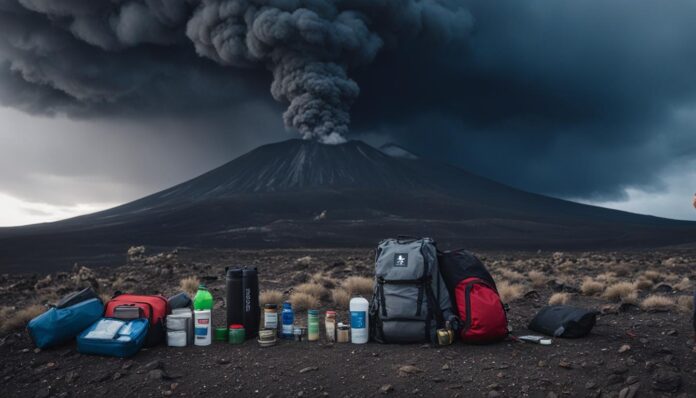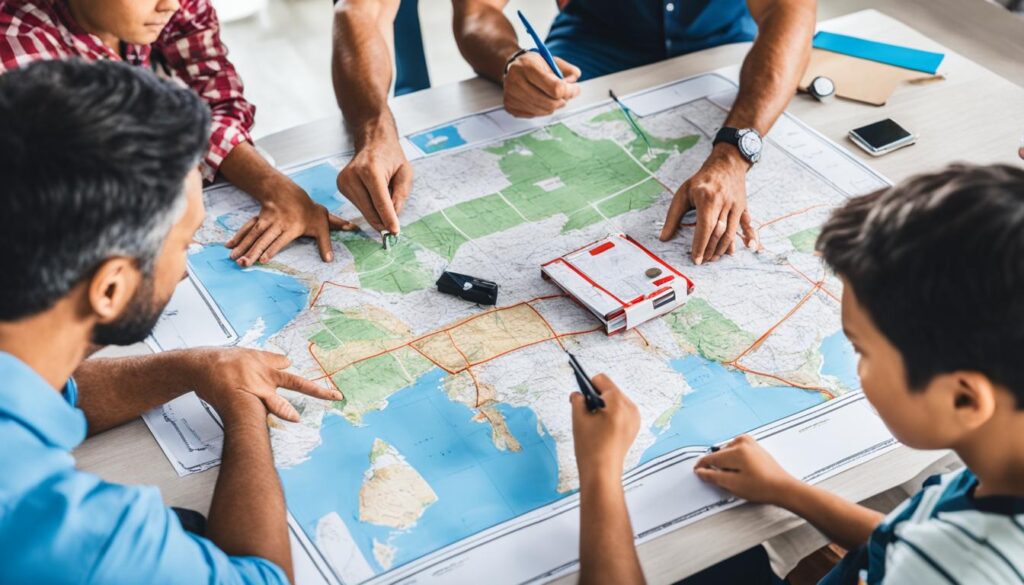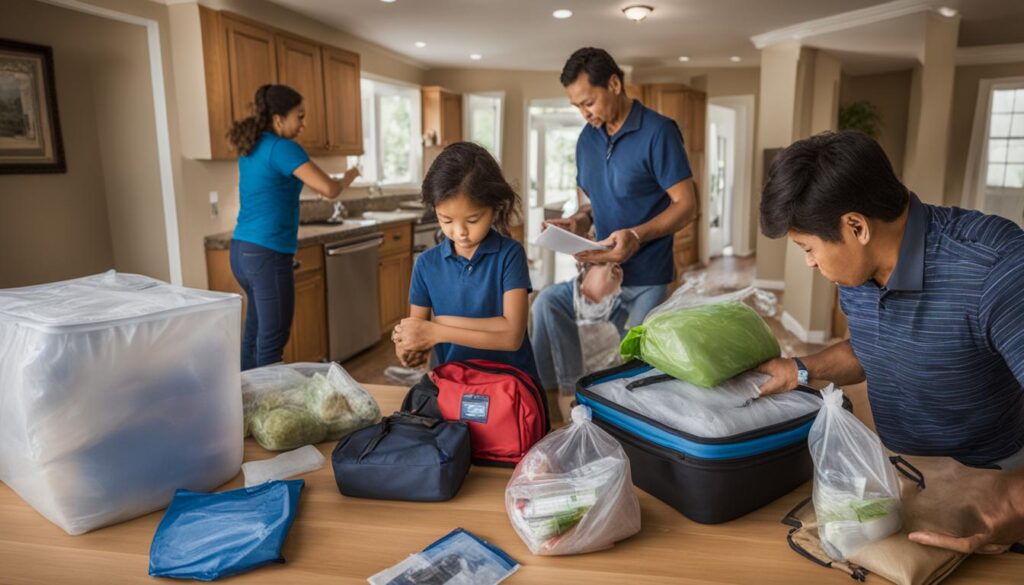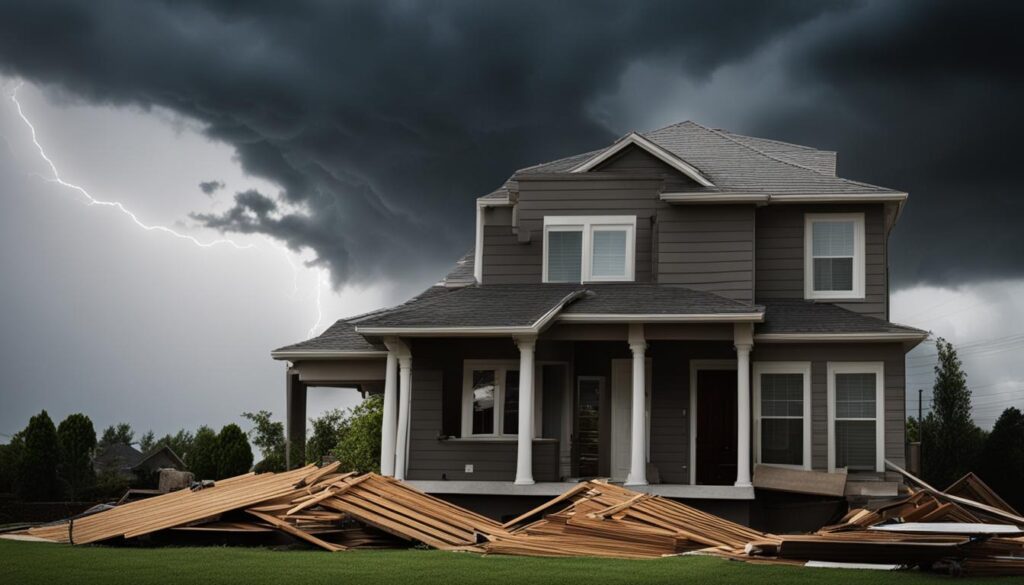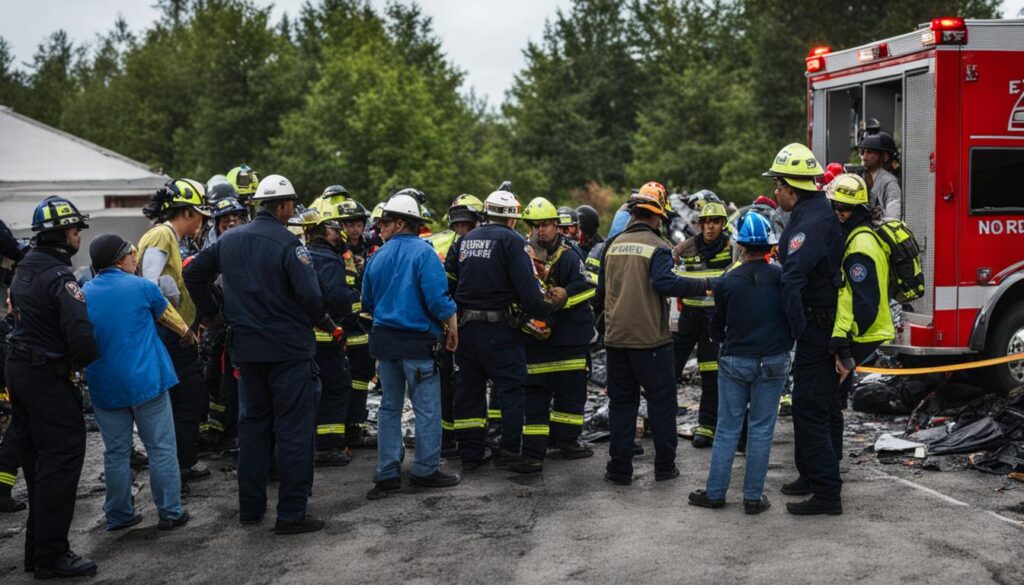When disaster strikes, being prepared is key. By understanding the importance of staying safe in disaster zones, you can take steps to protect yourself and your loved ones. This article will provide essential tips for disaster preparedness and emergency response, including important safety precautions to follow. With these tools in hand, you’ll be better equipped to navigate challenging situations with greater confidence.
Types of Natural Disasters and Their Risks
Being aware of the different types of natural disasters and their risks is crucial for natural disaster safety and disaster management. Here is a table that highlights some of the most common natural disasters and their associated risks:
| Natural Disaster | Risks |
|---|---|
| Hurricanes/Typhoons | High winds, heavy rainfall, flooding, storm surges |
| Earthquakes | Ground shaking, landslides, tsunamis |
| Tornadoes | High winds, flying debris, damage to buildings and infrastructure |
| Wildfires | Loss of property and infrastructure, smoke inhalation |
| Floods | Flash floods, river flooding, property damage, loss of life |
| Tsunamis | High waves, flooding, property damage, loss of life |
| Volcanoes | Lava flows, ash fall, toxic gases, lahars |
It’s important to note that each disaster presents a unique set of risks, and disaster management plans must be tailored accordingly. By understanding the specific risks associated with each type of natural disaster, you can better prepare for potential emergencies and minimize the impact of these events.
Developing an Emergency Plan
Developing an emergency plan is an essential part of disaster preparedness and emergency response. By creating a comprehensive plan, you can minimize risks and stay safe during a disaster. Here are the key components of an effective emergency plan:
Evacuation Procedures
Include evacuation procedures in your emergency plan, indicating the quickest and safest way to evacuate your home or workplace. Prepare a checklist of what to bring, such as important documents, medications, and emergency supplies. Also, identify multiple evacuation routes and practice evacuating before a disaster strikes.
Communication Strategies
Communication is critical during a disaster, so make sure your emergency plan contains communication strategies. Assign a designated family member or friend as a point of contact, and establish alternative methods of communication if traditional channels are unavailable. Also, stay informed about emergency alerts and notifications.
Designated Meeting Points
In the event of a disaster, it is crucial to identify designated meeting points for you and your family or friends. Choose locations that are safe and easy to find, and make sure everyone knows where they are. This will help you reconnect with loved ones quickly and efficiently.
Remember, emergency plans are not one-size-fits-all. Tailor your plan to your specific needs and circumstances, and make sure to keep it up-to-date. With a well-prepared emergency plan, you can stay safe and effectively respond to a disaster.
Essential Emergency Supplies
In times of disaster, having the right emergency supplies can help ensure your safety and wellbeing. Being well-prepared can help you stay calm and focused, even in the most challenging situations. Here, we’ll outline the essential emergency supplies you should have at your disposal in case of disaster.
| Emergency Supply | Why It’s Essential |
|---|---|
| Food and water | In case of a disaster, you might not have access to clean water or food. Having non-perishable food and plenty of bottled water can help ensure you have the necessary nourishment to get through the crisis. |
| First aid kit | During a disaster, injuries can happen. Having a well-stocked first aid kit can help you deal with minor injuries and potentially save lives. |
| Flashlight and extra batteries | Electricity may be out for extended periods after a disaster. Having a reliable source of light can help you navigate safely in the dark. |
| Emergency radio | You may not have access to critical information during a disaster. Having an emergency radio can help you stay up-to-date on weather updates, evacuation orders, and more. |
| Clothing and blankets | Disasters can lead to exposure, hypothermia, or heat exhaustion. Having adequate clothing and blankets can help you stay warm and avoid complications from extreme temperatures. |
Other important emergency supplies to consider include a whistle to signal for help, a multipurpose tool, such as a Swiss Army knife, and a full tank of gas in your car. Pack all emergency supplies in a waterproof container and store in a secure, easily accessible location.
Evacuation Procedures and Safety Tips
When disaster strikes, it is crucial to know how and when to evacuate safely. Evacuation procedures are critical in ensuring your safety and the safety of those around you. Understanding potential hazards along the way can help you prepare for any situation you may encounter.
First and foremost, do not panic. Stay calm and quickly gather any emergency supplies you may need. Follow the designated evacuation routes and pay attention to signs and instructions provided by emergency responders. If you are unsure about which route to take, ask for assistance.
Know the location of your designated meeting point and check in as soon as possible. If you are with family or friends, ensure that everyone is accounted for.
As you evacuate, be mindful of potential hazards that may impede your path and take extra precautions to avoid them. These may include debris, fallen trees or power lines, and damaged structures.
In the event that driving is not possible, walking may be your only option. If this is the case, wear sturdy shoes and stay together with a group. Avoid standing or walking in flooded areas and stay alert for any potential dangers.
It is also important to keep in mind that evacuation procedures may differ depending on the type of disaster. For example, if you are evacuating due to a wildfire, different routes and shelters may be designated than in the case of a hurricane. Familiarize yourself with different evacuation procedures to be better prepared in case of an emergency.
Remember, safety precautions are crucial during an evacuation. Keep your emergency supplies close, stay alert, and follow instructions carefully. Preparing ahead of time will ensure a smooth evacuation and keep you and those around you safe.
Seeking Shelter and Securing Your Home
During a disaster, seeking shelter is crucial to stay safe. The state of your home can make a significant difference in how well it fares during a disaster. Hence, it is vital to fortify your property and create a safe space.
Here are some safety precautions to ensure your home is secure:
- Secure loose items: Before a storm, secure all outdoor items such as patio furniture, potted plants, and garden tools. Ensure your home has hurricane shutters or plywood that can be used to cover windows and doors.
- Turn off utilities: In case of natural gas leaks or electrical sparks, turn off the utilities to avoid accidents such as fires or explosions. Make sure you know where your gas and water shut-off valves are located.
- Identify appropriate shelter: Locate appropriate shelter within your home, such as a tornado safe room, basement, or an interior room without windows. If you live in a flood-prone area, make sure your home is elevated enough to avoid water damage.
- Prepare emergency supplies: Keep your emergency supplies, packed in a waterproof container, and ready for a quick evacuation if it becomes necessary. Supplies like a first aid kit, flashlight, batteries, blankets, and extra clothing should be included.
- Stay informed: Stay informed about potential natural disasters that could affect your area by listening to local weather reports and emergency broadcasts. Follow evacuation instructions issued by local authorities and emergency services.
By taking these disaster preparedness measures and securing your home, you can significantly reduce the risks associated with natural calamities.
Essential Preparations for Seeking Shelter and Securing Your Home
| Preparations | Descriptions |
|---|---|
| Secure loose items | Clean your surroundings; make sure loose outdoor items such as furniture and garden tools are properly secured. Install hurricane shutters or use plywood to cover windows and doors, to avoid debris entering indoors. |
| Turn off utilities | Turn off gas, water, and electricity supply to your home before a disaster strikes to avoid leaks and breaks. Identify the location of valves and switches for easy access. |
| Location of Shelter | Locate the appropriate shelter within your house, such as a basement or interior room without windows, in case of tornados or other natural calamities. Check the location periodically and make sure doors and windows are appropriately secured during the event. |
| Prepare Emergency Supplies | Store emergency supplies in a waterproof container, readily accessible in case an evacuation is necessary. Essential items such as first aid kits, flashlights, batteries, blankets, and extra clothing should be included. |
| Stay informed | Stay tuned to local news and weather reports and pay attention to evacuation orders provided by local authorities. Monitor updates and follow instructions provided by emergency services. |
Emergency Communication Strategies
During a disaster, effective communication can be a matter of life and death. Traditional communication channels such as phone lines and the internet may be disrupted, leaving you cut off from loved ones and emergency services. However, there are alternative methods of communication you can use to stay connected.
Alternative Communication Methods
If phone lines are down, you can try sending text messages or using social media platforms to communicate. Be sure to conserve your phone’s battery and only use it for emergencies. You can also use a handheld radio to connect with emergency services and stay informed of the latest updates.
It’s important to have a designated meeting point for your family, as it may be difficult to communicate during a disaster. Make sure everyone knows the location and how to get there.
Staying Connected with Emergency Services
If you need to contact emergency services, try dialing 911 first. If that doesn’t work, you can try dialing the non-emergency number for your local police department or fire station.
Some communities also have alert systems that send emergency notifications to your phone or email. Check with your local government or emergency management agency to see if this is available in your area.
Emergency Communication Strategies
| Communication Method | Pros | Cons |
|---|---|---|
| Texting | Can be more reliable than phone calls during network congestion | May not be able to send or receive messages if phone battery dies or the network is down |
| Social Media | Can quickly reach multiple people at once, even across great distances | May not be accessible if power or network connectivity is lost |
| Handheld Radio | Can connect to emergency services and other users within range | May not work if battery dies or the device is damaged |
| Emergency Alerts | Can provide immediate notification of local emergencies | Dependent on having access to power and internet connectivity |
Remember, communication is crucial during a disaster. Being proactive and prepared can help you stay connected and keep you and your loved ones safe.
Contributing to Disaster Relief Efforts
Disaster relief efforts are crucial for helping affected communities recover in times of crisis. If you’re looking to make a difference, there are several ways to contribute.
Donations
One of the most common ways to support disaster relief efforts is through donations. You can donate money or goods, depending on the needs of the affected areas. Various organizations, such as the Red Cross and UNICEF, accept donations for disaster relief. Keep in mind that monetary donations are usually the most helpful, as they allow organizations to purchase exactly what is needed.
Volunteering
If you have the time and resources, volunteering for disaster relief efforts can be a rewarding experience. Disaster relief organizations often need volunteers for tasks such as distributing supplies and assisting with cleanup efforts. However, be sure to research the organization and its needs before volunteering, as some may require specific skills or qualifications.
Supporting Local Agencies
Supporting local agencies can also have a great impact on disaster relief efforts. These agencies often have firsthand knowledge of the affected areas and can provide immediate assistance to those in need. Consider donating to or volunteering with local groups, such as food banks or shelters, to help support affected communities.
Remember, every contribution helps to make a difference in disaster management. With your support, affected communities can begin to rebuild and recover from the aftermath of natural disasters.
Conclusion
In conclusion, it is crucial to prepare and plan for potential disasters to ensure the safety of yourself and your loved ones. By understanding the risks posed by different types of natural disasters and following the essential tips provided in this article, you can better protect yourself during times of crisis.
Remember to develop a comprehensive emergency plan that includes evacuation procedures, communication strategies, and designated meeting points. Keep essential emergency supplies on hand, and understand how to seek shelter and secure your home during a disaster. Additionally, knowing effective emergency communication strategies and ways to contribute to disaster relief efforts can make a significant difference during challenging times.
By taking the time to educate yourself and implement safety precautions, you can navigate emergency situations with greater confidence and protect yourself and those around you. Stay safe.




























